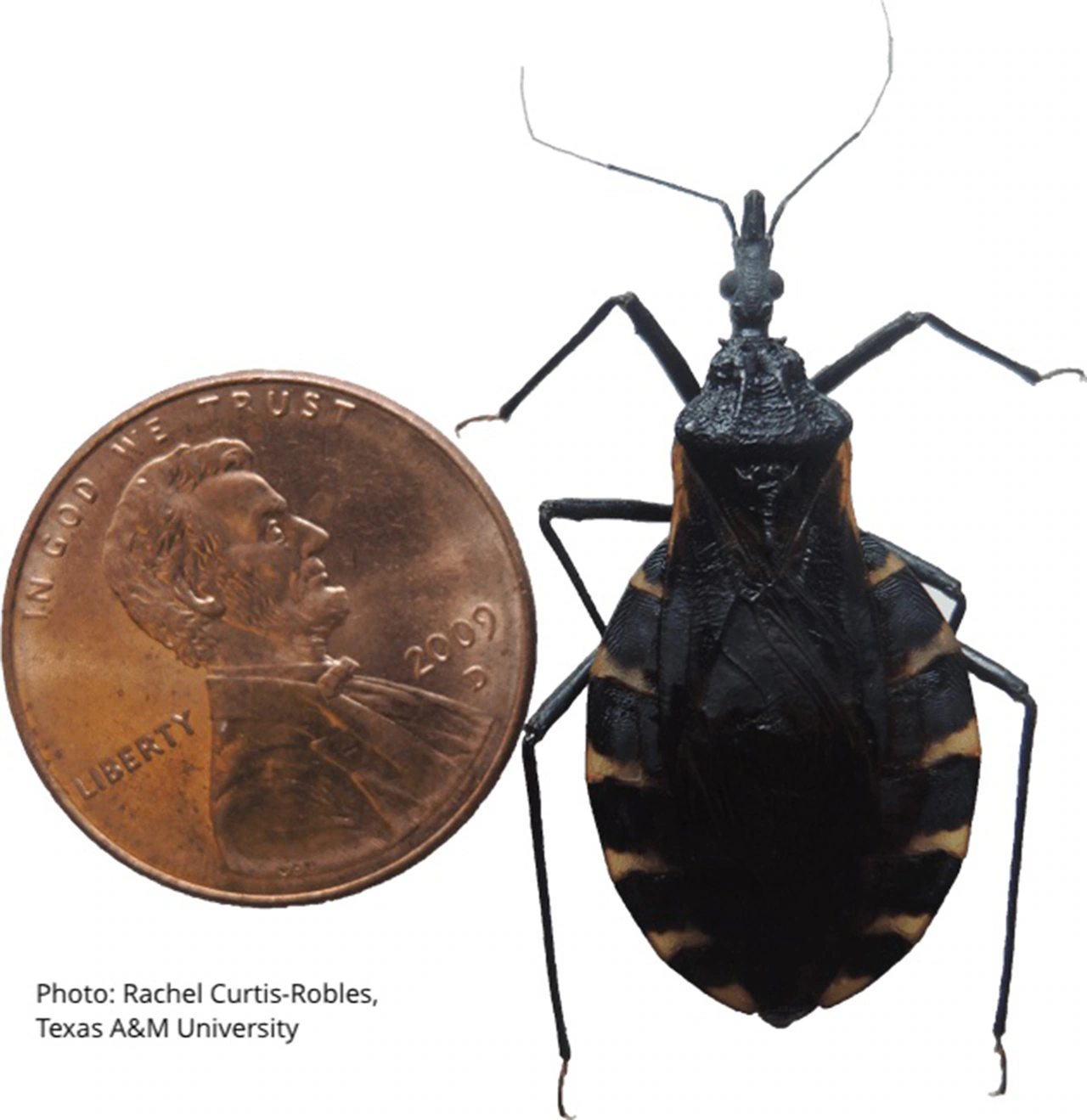
Parasitic “kissing bugs,” small dark insects with orange and red stripes, once thought to be confined to rural South America, are known to spread Chagas, or “kissing bug disease,” and their consistent presence in 29 U.S. states has alarmed researchers.
Chagas disease is passed to people through contact with the feces of infected bugs or by accidentally rubbing the feces into open wounds, the eyes or mouth — hence “kissing” in the disease name — according to the Centers for Disease Control and Prevention.
Symptoms of the illness
And though it begins with mild symptoms, the disease can cause heart disease and stroke if it goes undetected, according to the CDC.
Researchers from Texas A&M University stated that there may be more than 1 million cases in the United States.
And, since 2013, there have been around 10,000 reports of “kissing bugs” in the United States, including neighboring New Jersey and Pennsylvania, according to the Texas A&M report.
A little more than half of these bugs carried the Chagas parasite, which can cause the disease in humans, the study said.
No cases of the disease have been identified in New York, according to the CDC.
Though there is concern the insects will make their way to the Empire State, they have not been detected in the state for now, ecologists say.
“They will be in New York soon, but aren’t being detected yet,’’ said Jose Ramirez-Garofalo, an ecologist and president of Protectors of Pine Oak Woods, the borough’s largest environmental protection organization. ”They are proficient fliers, which can help them move long distances.”
Ramirez-Garofalo warned Staten Islanders not to kill insects they suspect to be kissing bugs, because many species that already live on Staten Island look nearly identical.
The insects have been present across Latin American for hundreds of years. Additionally, cases of the disease have been present southern states for decades, researchers say.
The disease should be labeled an endemic in the United States, ensuring awareness and funding for research and treatment, according to a 2025 CDC-supported study led by researchers from the University of Florida and Texas A&M.
Infected states
The researchers cited consistent cases of the disease in at least eight states: Texas, California, Arizona, Louisiana, Tennessee, Missouri, Mississippi, and Arkansas. The CDC has identified infected insects in 32 states, primarily in the southern half of the country.
The disease, often dubbed a “silent killer,” can lie dormant for years before triggering severe cardiac complications, including heart failure, stroke, and even sudden death, the CDC stated. While acute symptoms may include swollen limbs or eyes, the more dangerous effects often emerge only after years of unnoticed infection, according to the federal agency.
This early, or acute, stage happens in the first weeks or months after getting infected. Symptoms are often mild or not there at all and can include fever, tiredness, body aches, headache, rash, diarrhea or eyelid swelling, the CDC said.
In epidemiology, an infection is said to be endemic in a specific population or populated place when that infection is constantly present.
“This is a disease that has been neglected and has been impacting Latin Americans for many decades,” said Dr. Norman Beatty, an epidemiologist and Chagas expert. “But it’s also here in the United States. Recognizing Chagas disease endemicity in the United States as a regional issue will be imperative to begin implementing local, state, and national strategic plans to tackle this neglected disease that, as has been demonstrated, has never been exclusively tropical.”
Early treatment critical
Because early symptoms often go unnoticed, early treatment is critical and can be lifesaving, the CDC said.
Although rare, infection with the parasite T. cruzi, which causes Chagas disease, can also occur from contaminated food or drink, blood transfusions, or organ transplants, among other routes.
According to the University of Florida and Texas A&M study, labeling the United States as non–Chagas disease–endemic perpetuates low awareness and underreporting. Classification could improve surveillance, research, and public health responses.
The CDC advised that travelers in areas with high numbers of the insects protect themselves from the “kissing bug” disease by staying in well-built places, like air-conditioned or screened-in hotel rooms, sleeping under bed nets treated with insecticides, wearing skin-covering clothing and using bug spray on exposed skin.
Avoid eating salads, raw vegetables, unpeeled fruits and unpasteurized fruit juices during travel to these countries, the CDC warned.



